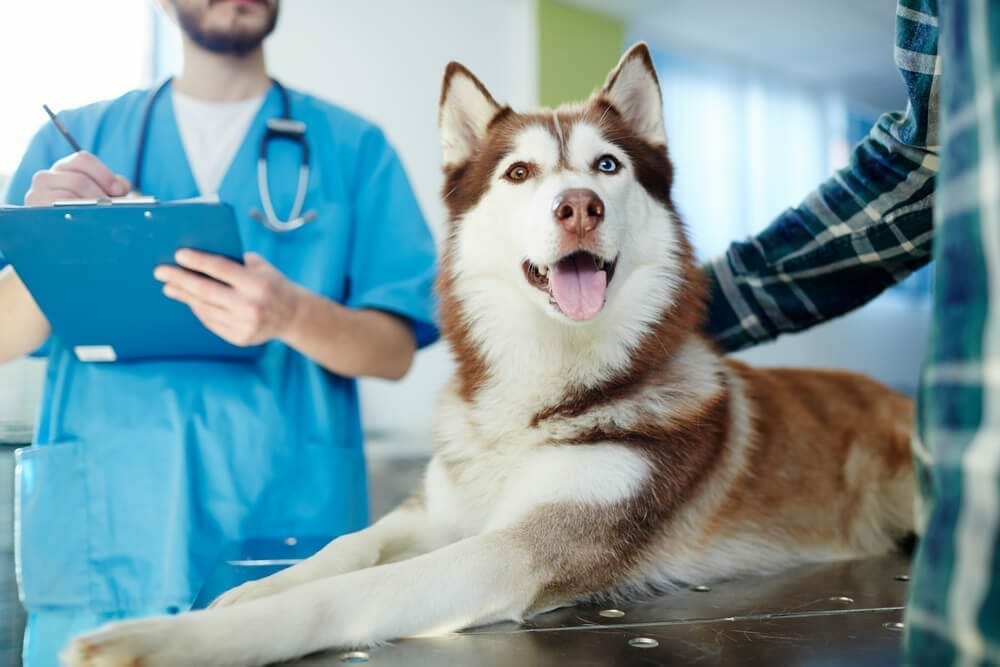Understanding Cruciate Ligaments
PIA Australia
April 25, 2018
For some dog owners, cruciate ligament problems cause a fair amount of anxiety. Pet Insurance Australia explains what the cruciate ligament does, why our dogs are at risk of this expensive injury, and how pet owners can prevent problems. PLUS; expert comments from Animal Referral Hospital (ARH) Dr Sarah Goldsmid BVSc, MVetClinStud, FACVSc Specialist Small Animal Surgeon and the Director of the Animal Referral Hospital.
Sadly, cruciate ligament problems are becoming a widespread issue amongst dog owners. There is plenty of debate amongst the veterinary sector as to why this is occurring, from bad breeding and genetic issues to allowing our dogs to become overweight and obese.
The cranial cruciate ligament (CCL) is a band of connective tissue that connects the thigh bone with the lower leg. This ligament provides stability to the stifle joint (or knee) on the hind legs of your dog. When the CCL is damaged or failing, your dog will exhibit symptoms of lameness and pain in the joint. This can be sudden (due to injury) or a progressive failure. A cranial cruciate ligament rupture is the ripping of this important ligament.
“Rupture of the cranial cruciate ligament (CCL) is a common cause of hindlimb lameness in dogs. It can happen in any breed and size dog often as a result of running, jumping, twisting, types of activity,” Dr Sarah Goldsmid, from Animal Referral Hospital says. “However, it also commonly starts as a partial CCL tear and the dog may suffer intermittent progressive lameness and osteoarthritis (OA) develops over many months before completely rupturing. Often dogs have significant arthritis changes in their knee before full rupture and diagnosis of the problem.”
As with all related issues it’s important for pet owners to seek veterinary treatment quickly if they notice their dog is in pain or reluctant to use one of their legs. Dogs, like cats, are masters at masking their pain, so it is important to note any changes in your dog’s walking abilities or comfort to your vet as quickly as possible.
Interestingly some cats also suffer from CCL issues.
“Cats can also rupture their CCLs, however, it is a much less common diagnosis,” Dr Goldsmid says. “Cats are also good at masking lameness and often a CCL injury may be missed in a cat, or they recover without surgery due to their smaller weight and ability to cope with knee instability better than a dog.”
#Prevention Tips
- Only purchase your pups from a reliable source and ask about genetic issues
- Insure your pets from a young age and ask about the waiting periods for CCL issues
- Keep your pets in a healthy weight range
- Seek veterinary treatment if you suspect your pet is lame
- Encourage safe exercise
- Do no over-exert young dogs, particularly large breeds
“Firstly, get you pet insured as early as possible,” Dr Goldsmid advises. “There is generally a 6 month waiting period from time of insurance until coverage.”
*Unless you have a signed vet certificate, at the time the insurance is taken out, to confirm the animal is free from injury and shows no indication of a prior cruciate ligament related condition.
“Secondly – keep your pet at a healthy weight. Overweight dogs are more likely to damage their joints and have more problems associated with osteoarthritis some activities are more likely to lead to CCL injury – chasing balls, jumping in the air to catch a frisbee, rapid twisting movements in unstable ground – but may be unavoidable. Ultimately, you cannot always prevent this injury and some dogs are more prone to the problem due to conformational issues.”
TREATMENT
For many dogs suffering from CCL problems surgery is the only option, however Dr Goldsmid is quick to remind readers to not base your decision on cost alone and to seek advice from a specialist.
“Complications can happen with any procedure, however, in general you are better to opt for a specialist to perform this type of orthopaedic procedure,” she warns. “Like many things in life – ‘you get what you pay for’ – and it is worth not making a decision about surgery on your pet based on going for the cheapest option. If complications arise, repeat procedures often mean you end up paying a lot more than having it done by a specialist in the first place.”
A specialist will repair your pets CCL and there are many different techniques to manage and treat the problem. From the older practice of replacing the ligament to the newer version of altering the actual biomechanics of the joint to allow function without an intact CCL.
“You can never make the knee joint normal again after the CCL has ruptured and you cannot reverse the OA developing. However, surgery can stabilise the knee joint, help prevent further damage and reduce the amount or rate of OA development. It is common (over 50% of cases) will also have meniscal tears (the cartilage cushion within the joint gets damage due to the instability). The meniscal injuries also need to be managed well, or there will be ongoing lameness,” Dr Goldsmid says. “In general, the larger and more active the dog the better it is to have one of the newer techniques performed.
Costs?
The costs of these procedures can vary but as a rule of thumb they are on the more expensive side of treatments. Either procedure can end up costing anything between $5,000 – $6,000.
“The cost depends on the size of the patient, the type of procedure selected and the competency of the surgeon. To have a specialist perform a TTA or TPLO usually will end up costing $5000-$6000 – if you add up consults, radiographs, blood work, implants, fluids, surgery, anaesthesia, medication and follow up checks. General practitioners will charge less for surgery, but if there are any complications – that will be additional to the original costs,” Dr Goldsmid says.

8 Comment